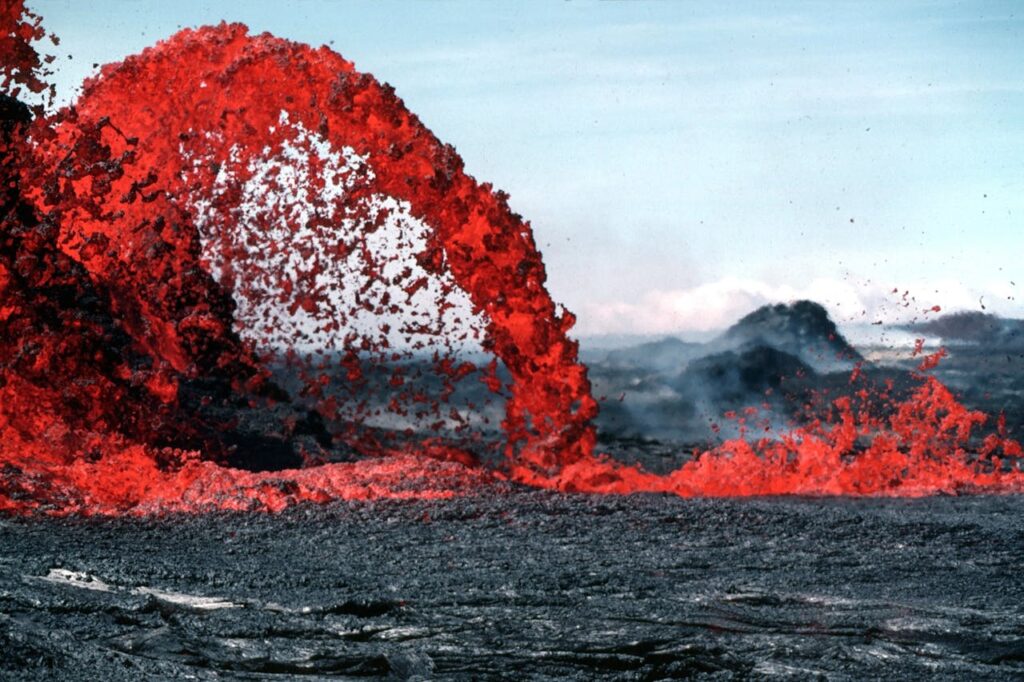Rapid Evacuations Ordered as Volcanic Eruption Intensifies

Rapid Evacuations Ordered as Volcanic Eruption Intensifies
An intense volcanic eruption has compelled the authorities to issue an emergency evacuation order for a number of towns and villages that are located in close proximity to the danger zone. What started off as a few mild earthquakes and a light fall of ash has now developed into a full-scale eruption, which is spewing gigantic plumes of ash and molten lava far into the skies. The eruption, which was followed by strong explosions and continuously occurring seismic activity, has created a situation in which emergency personnel are racing against the clock to relocate inhabitants to safer locations. The roads are jammed with automobiles, the shelters are filling up, and emergency bulletins are advising people to escape as soon as possible. This unexpected and perhaps fatal catastrophe has caused a great number of people to experience anxiety, uncertainty, and a sharp reminder of the overwhelming force that nature has.
1. The Timeline of the Eruption
Small tremors that occurred underneath the volcano were the first indications of disturbance, which started some days before. Within forty-eight hours, the activity level skyrocketed, resulting in a series of eruptions that occurred on a single day, each one being more violent than the one that came before it.
2. Immediate Effects upon the Communities in the Surrounding Area
A number of nearby communities were affected by falling ash, poisonous gasses, and lava flows that came perilously close to residential areas. Agricultural areas have been buried in a thick layer of volcanic debris, and power shortages have become common.
3. The Emergency Response Plan created by the government
For the purpose of preventing anybody from approaching potentially dangerous areas, the authorities activated their highest level of emergency measures, which included the deployment of rescue teams, the distribution of masks, and the establishment of evacuation checkpoints.
4. Orders to evacuate and difficulties presented by logistics
Finding a way to relocate thousands of individuals on short notice has proved to be difficult. On account of the fact that many locals are dependent on farmlands or own animals, the choice to leave is not only emotionally challenging but also financially challenging.
5. What Scientists and Volcanologists Do in Their Fields
The next phase of the eruption is being predicted by specialists by monitoring seismic data, gas emissions, and satellite imaging. This information is giving essential direction to those who are responsible for emergency planning.
6. Interference with the Transportation and Infrastructure Systems
Several regional airports have been forced to close due to the presence of ash clouds, and falling debris has caused damage to roads and bridges, making it more difficult to evacuate people and supply supplies.
7. Issues Relating to Public Health
The inhalation of volcanic ash may result in severe respiratory problems, particularly for younger people, the elderly, and those who already have a preexisting illness. As part of their response, medical professionals are distributing masks and establishing makeshift clinics.
8. Repercussions of the Disaster on the Economy
Tourism has been suspended, companies have been closed, and agriculture, which is one of the primary economic drivers in the area, is facing the possibility of suffering potentially disastrous long-term harm.
9. International Assistance and Financial Support
With the intention of assisting with relief activities, neighboring nations and international humanitarian organizations are providing assistance in the form of equipment, food supplies, and emergency personnel.
10. Stories about enduring adversity and overcoming adversity
Evacuees recount terrifying experiences of evading approaching lava and suffocating ash, and they sometimes had just a few minutes to gather their things before trying to exit the area.
11. Repercussions Affecting Wildlife and the Environment
In addition to the effects that it has on humans, the eruption is changing the ecology of the surrounding area, driving animals out of their natural homes, and poisoning water supplies with volcanic ash.
12. The Obstacles Facing Long-Term Recovery is Number Twelve
The reconstruction process will need a substantial amount of resources, including the restoration of farmlands, the reconstruction of damaged infrastructure, and the provision of long-term homes for people who have been displaced.
13. Lessons Learned from Previous Incidents
In order to increase the effectiveness of evacuations, communication systems, and emergency preparation, communities and government are calling attention to catastrophes that have occurred in the past.
14. The Importance of Technology in the Response to Disasters
Emergency crews are able to watch the spread of lava and ash with the use of drones, satellite photography, and the exchange of data in real time. This helps to make evacuation efforts more focused and accurate.
15. Emotional Weight Placed on the Populations Affected
The inhabitants are coping with anxiety, trauma, and grief as a result of the uncertainty of when or if they will be able to return home weighing heavy on their shoulders.
- Developing Resilience Against Natural Disasters: Moving Forward in the Face of Emergencies
- This eruption brings to light the need of enhancing disaster-preparedness programs, enhancing the resilience of infrastructure, and improving public education about how to react to abrupt natural hazards.







